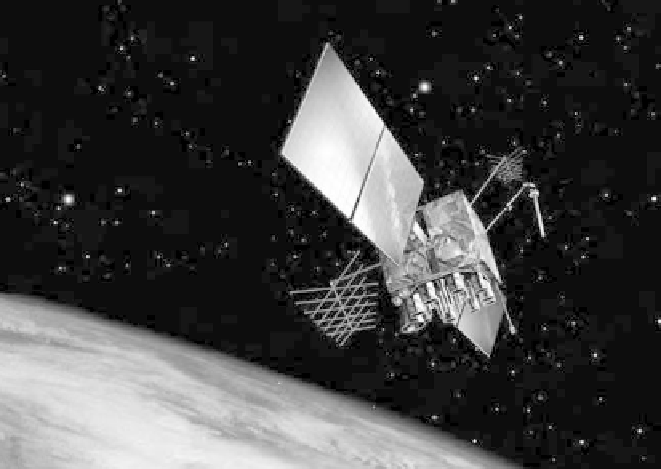Global Positioning System Reference
In-Depth Information
Figure 3.7
Block IIR satellite. (
Source:
Lockheed Martin Corp. Reprinted with permission.)
launched since 1997 (the first Block IIR satellite was lost in a launch accident early
that year). Lockheed Martin and its navigation payload subcontractor, ITT Aero-
space/Communications, are building these satellites.
The Block IIR began development following contract award in 1989 as a totally
compatible upgrade and replacement to the Block II and Block IIA SVs. All of the
basic GPS features are supported: C/A and P(Y) code on L1, P(Y) on L2, ultra-high
frequency (UHF) crosslink capability, attitude determination system to stabilize the
SV bus platform, reaction control system to maintain the on-orbit location in the
constellation, and sufficient power capacity for the life of the vehicle.
There are two versions of the Block IIR SV. The “classic” IIR and its AFSs,
autonomy, reprogrammability, and improved antenna panel will be described first.
The features of the “modernized” IIR will be covered later in this section.
Classic IIR
The baseline (nonmodernized) GPS Block IIR has now been dubbed the
classic IIR
.
The Block IIR satellites are designed for a MMD of 6 years, a design life of 7.5
years, and inventory expendables (e.g., fuel, battery life, and solar panel power
capacity) of 10 years. As of August 2005, there were 12 IIR SVs in the 30-SV con-
stellation. The oldest IIR SV (SVN 43) was over 8 years old at time of this writing,
exceeding the required 7.5-year design life.
Figure 3.8 shows some of the main components of the Block IIR SV. Several of
these will be highlighted in the remainder of this section.
Advanced Atomic Frequency Standards
All IIR SVs contain three next generation rubidium AFSs (RAFS). The IIR
design has a significantly enhanced physics package that improves stability and
reliability [4].

Search WWH ::

Custom Search